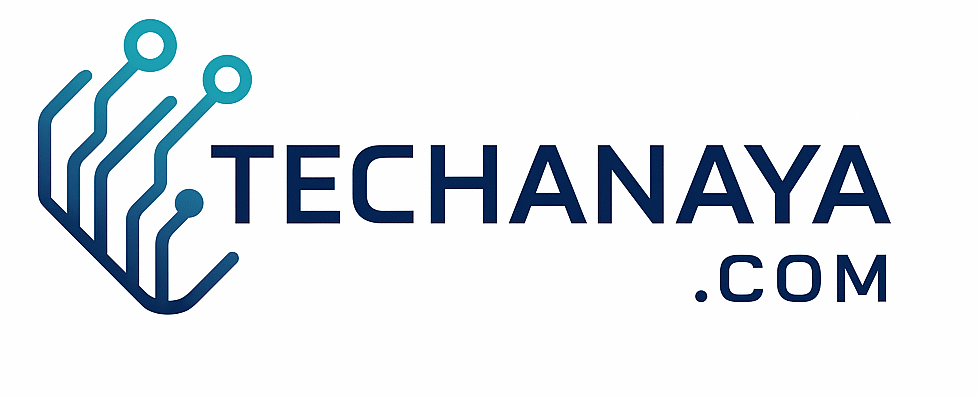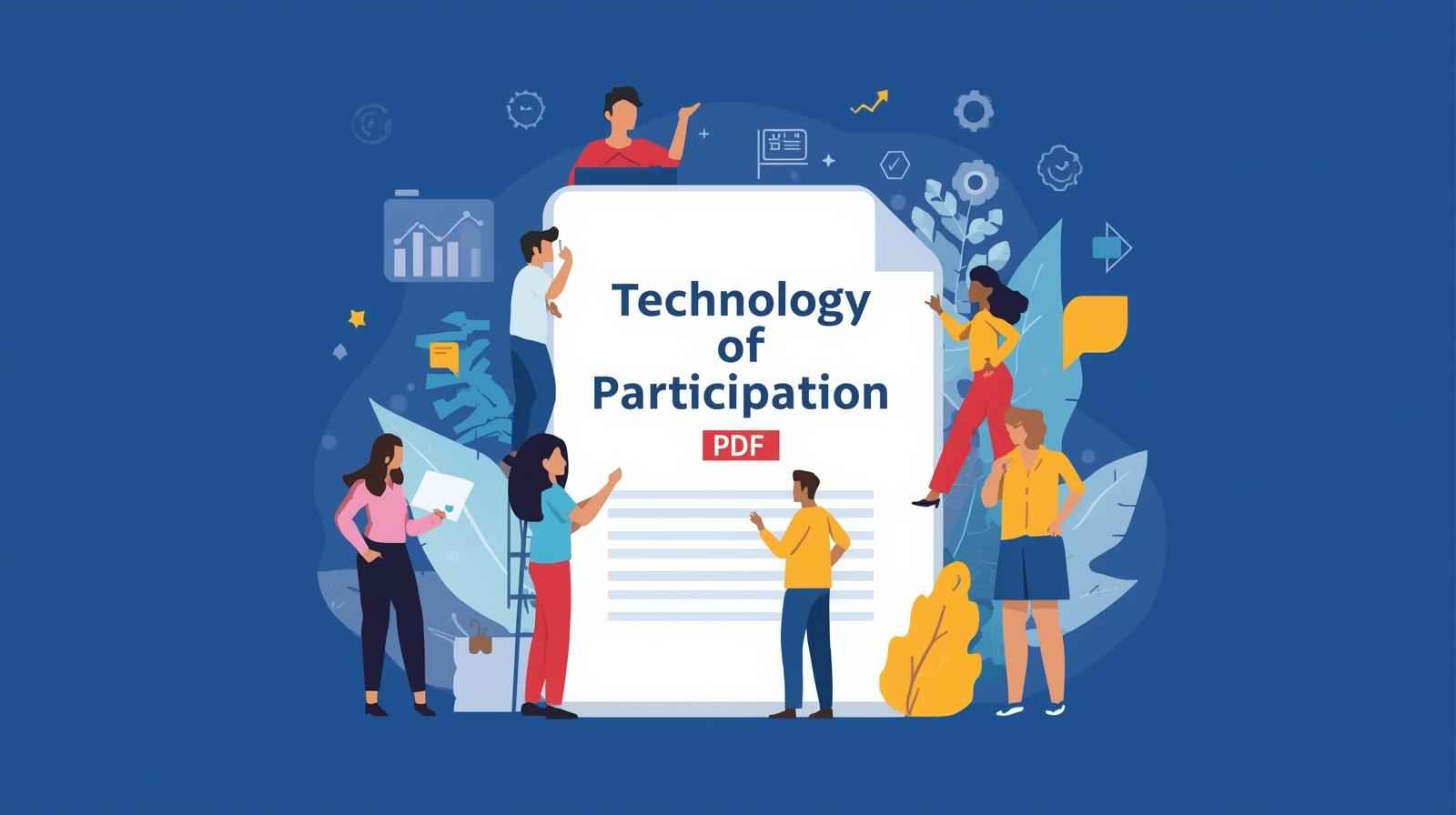Technology of Participation PDF:
When people talk about collaboration and decision-making in groups, the term “Technology of Participation” often comes up. It isn’t about gadgets or high-tech machines. Instead, it’s a structured method that helps communities, organizations, and even small teams work together more effectively. If you’ve ever been in a meeting where voices were lost, ideas got stuck, or decisions went nowhere, then this approach is exactly what could have changed the outcome.
I first came across the Technology of Participation, or ToP for short, while working on a community project. We had passionate members, but our meetings always seemed messy. Some people dominated conversations, while others stayed silent. The results were either half-baked or dragged on without conclusion. Discovering ToP was like finding a playbook that made sense of the chaos. It showed me how structured facilitation could turn noisy discussions into clear, collective action.
This article is going to take you on a full journey into understanding the Technology of Participation PDF resources. You’ll learn what ToP really is, how the PDF guides are used, and why they matter in today’s workplaces and communities. We’ll dig into its history, the concepts behind it, and the practical ways you can apply it to real-life situations.
Stick around because what you’ll gain here is more than just theory. By the end, you’ll know how to apply ToP methods in your own work, whether you’re leading a business meeting, hosting a classroom session, or engaging with a nonprofit community group. And yes, I’ll also help you understand how those downloadable PDFs can become your toolkit for structured participation.
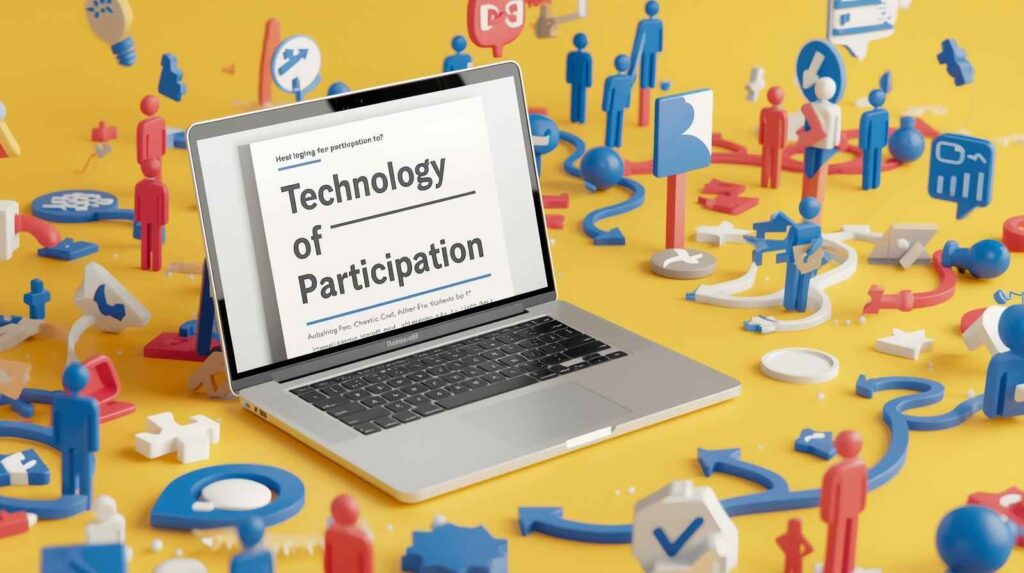
What is Technology of Participation?
The Technology of Participation (ToP) is a set of facilitation methods created to improve group collaboration. It was developed by the Institute of Cultural Affairs (ICA), an international nonprofit organization that focuses on community development and leadership training.
At its core, ToP is about giving every participant a voice and making sure discussions lead to decisions. Think of it as a roadmap for collective problem-solving. Instead of letting meetings drift, it provides frameworks like focused conversations, consensus workshops, and participatory strategic planning.
One of the reasons ToP stands out is its flexibility. It can be used in large conferences with hundreds of people or in small team meetings with just five members. And unlike many management methods that focus only on outcomes, ToP puts equal weight on the process, ensuring that participants feel heard, respected, and engaged.
The Technology of Participation PDF often serves as a training or reference guide. These documents lay out step-by-step instructions, examples, and templates. They are especially valuable for facilitators who want a quick resource in hand while guiding a group session.
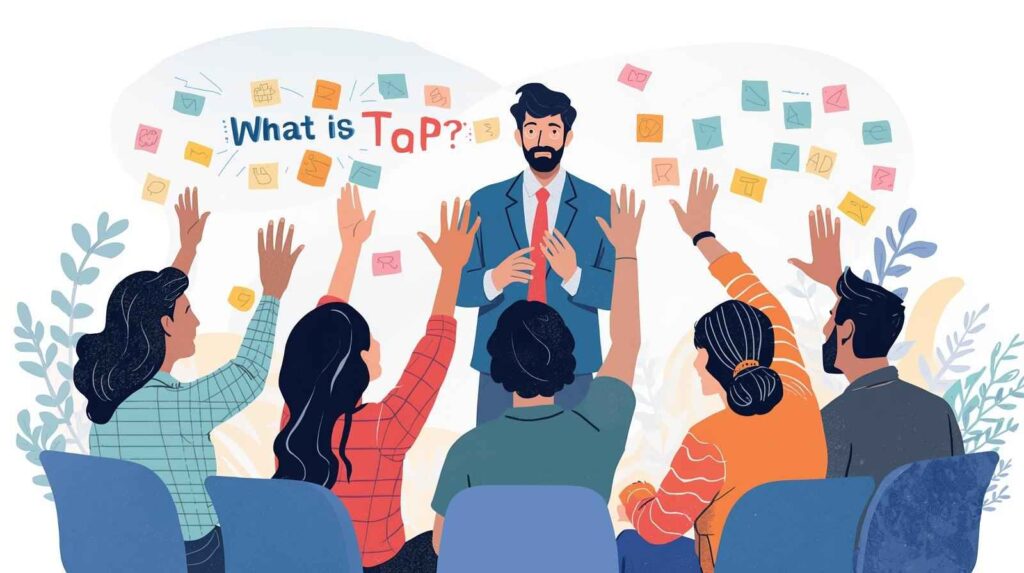
A Brief History and Background
The roots of ToP trace back to the 1960s and 70s, when the ICA was deeply involved in community development around the world. They noticed that projects succeeded not just when resources were available but when local people were actively involved in shaping solutions. That insight led to the creation of structured participation methods.
Over time, the approach became known as the Technology of Participation. It was less about technology in the digital sense and more about “techniques” or “tools” for group involvement. By the 1990s, ToP was being adopted in corporate settings, government programs, and nonprofit initiatives.
Fast forward to today, and ToP has become a respected methodology across multiple industries. From strategic planning in Fortune 500 companies to grassroots community projects, it continues to help groups move from scattered ideas to unified action. The PDFs you’ll find online usually summarize these decades of practice into accessible formats for learners and practitioners.
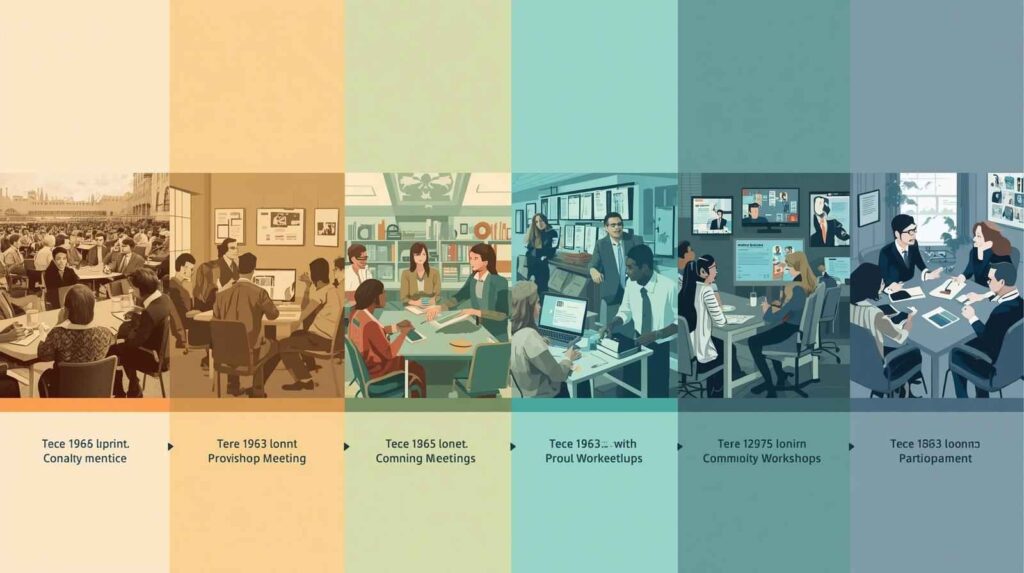
Key Components of ToP Methods
ToP is not just one method but a collection of several. The three most widely known are:
- Focused Conversation Method – A structured way to lead discussions by moving through four stages: objective, reflective, interpretive, and decisional. This keeps conversations from going off-track.
- Consensus Workshop Method – Designed to help groups organize ideas and reach agreement on priorities. Instead of endless debate, it channels creativity into structured clusters of thought.
- Participatory Strategic Planning – A step-by-step framework for groups to set long-term goals, create strategies, and outline clear actions.
These methods can be found in detail inside many Technology of Participation PDF resources. They act like recipe cards, guiding facilitators on how to prepare, what questions to ask, and how to keep participants engaged until the outcome is clear.
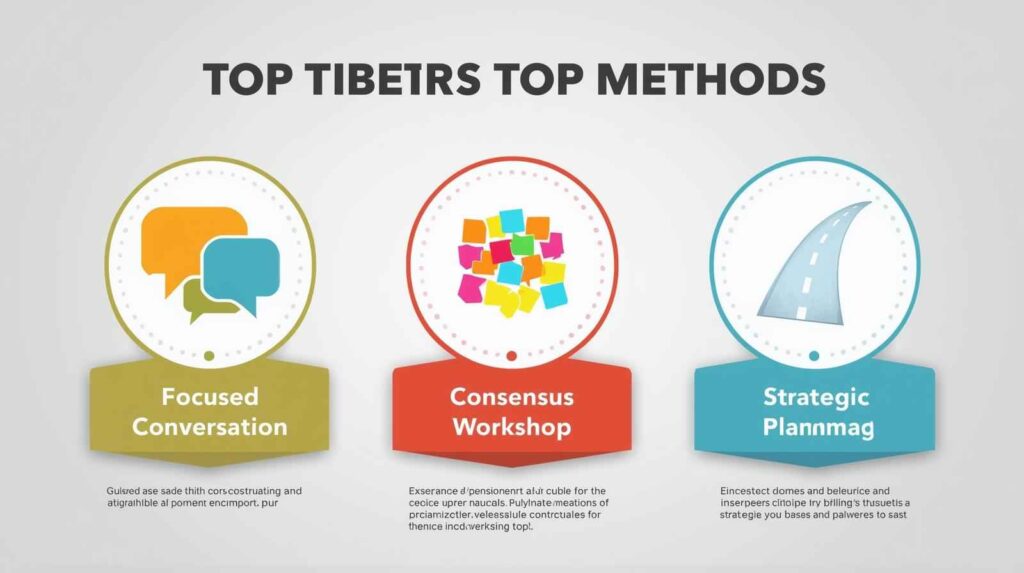
Understanding the Linguistic and Conceptual Aspects
The phrase Technology of Participation can feel unusual at first glance. The word “technology” makes many people think of computers, apps, or machines. But here, it refers to techniques, methods, and structured tools that help people participate more effectively. In other words, it’s not about hardware; it’s about human interaction.
Semantically Relevant Terms and Their Significance
When people talk about ToP, several terms naturally appear: facilitation, participation, collaboration, engagement, and dialogue. These words capture the essence of ToP’s purpose. Each signals an emphasis on people working together, rather than just following instructions from the top.
Lexical Terms & Common Usage
Commonly associated words include planning, decision-making, workshops, consensus, and strategy. These are not random. They highlight what ToP sessions actually look like: people sitting around tables, sticky notes on walls, ideas being clustered, and decisions being made through shared input.
Polysemy & Multiple Meanings in Different Contexts
The term “participation” itself carries multiple meanings. In education, it may mean students speaking up in class. In politics, it refers to voter engagement. In ToP, it specifically means structured involvement in group processes. This layered meaning is why ToP appeals across industries, it adapts depending on the context.
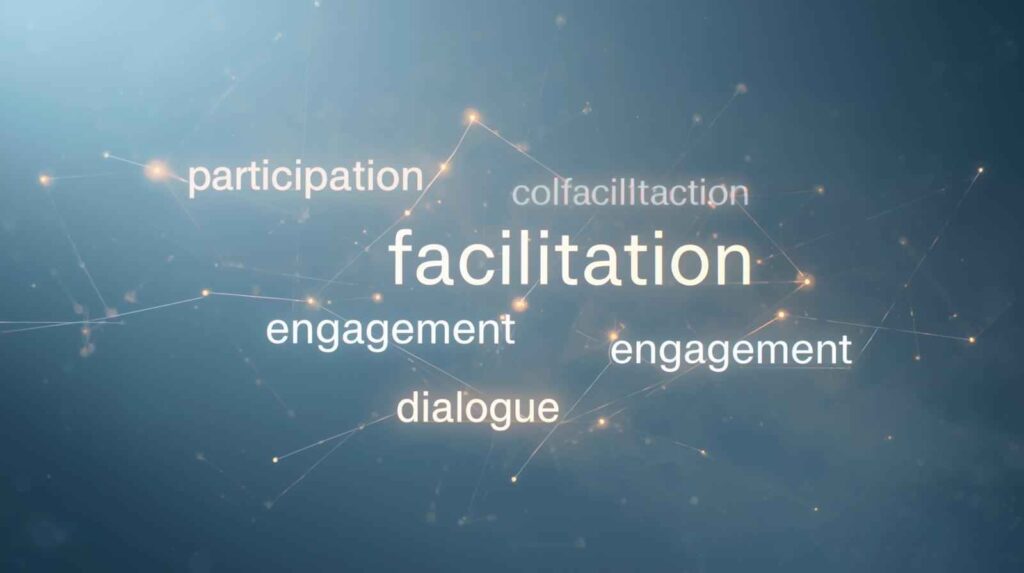
Exploring ToP in Depth
Hyponyms & Hypernyms – Where It Fits in a Broader Sense
ToP can be seen as a hyponym under facilitation methods, it’s a specific branch of group facilitation. Its hypernym is organizational development, since ToP contributes to larger goals like improving organizational performance and community growth.
Holonyms & Meronyms – The Whole and Its Parts
In a way, ToP itself is a holonym, with its main methods (Focused Conversation, Consensus Workshop, Strategic Planning) acting as meronyms or smaller parts. Together, they form a complete toolkit for participatory processes.
Synonyms & Antonyms – Alternative Meanings and Opposites
Synonyms for ToP methods could be participatory techniques, group facilitation frameworks, or structured collaboration. Antonyms would be top-down decision-making, autocratic leadership, or unstructured brainstorming. Where ToP invites inclusion, its opposite shuts voices out.

Contextual and Semantic Associations
Collocations – Common Word Combinations
If you scan ToP PDF guides, you’ll often find recurring phrases like “group consensus,” “participatory planning,” “facilitated dialogue,” and “shared decision-making.” These collocations show how ToP language always leans toward inclusivity and structure.
Connotations – How It’s Perceived
The connotation of ToP is positive, it suggests fairness, inclusion, and empowerment. For many, hearing “Technology of Participation” signals an opportunity to be heard, rather than being talked over.
Semantically Related Entities – Related Concepts and Connections
ToP connects closely with project management, leadership development, organizational change, and community building. It is often mentioned alongside frameworks like Appreciative Inquiry, Design Thinking, or Agile methods, though it has its own distinct identity.

Attributes and Characteristics of ToP
Common Attributes
- Structured processes
- Inclusive participation
- Clear decision-making outcomes
- Adaptability to different settings
Rare Attributes
- Can work across cultural boundaries with surprising effectiveness
- Balances both emotional and rational inputs in group discussions
- Offers equal weight to small voices and dominant voices
Unique Attributes
One unique quality of ToP is its ability to transform conflict into constructive dialogue. Instead of avoiding disagreements, ToP frameworks create space where differences are voiced but then funneled into solutions that everyone can support.
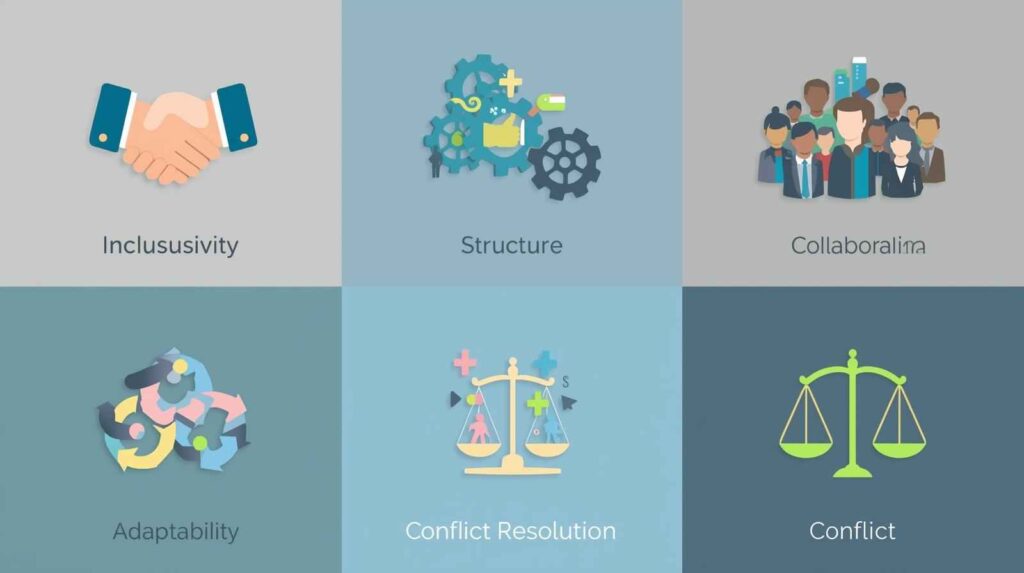
Practical Applications of Technology of Participation
ToP isn’t an abstract idea, it has very real uses. Here are some examples:
- Business and Corporate Planning
Many companies use ToP methods to build strategic plans. Instead of leaders dictating goals, employees at all levels contribute. This creates ownership and motivation. - Education and Training
Teachers and trainers adopt ToP to make classrooms more interactive. Focused conversations help students reflect, while consensus workshops guide group projects. - Government and Public Policy
Policy discussions often stall when voices clash. ToP methods help bring community input into government planning in a structured, balanced way. - Nonprofit and Community Projects
Grassroots groups rely heavily on ToP PDFs to guide workshops. It ensures that local knowledge shapes solutions rather than being ignored. - Conflict Resolution
In settings where disputes run deep, ToP can create a safe space for dialogue. By structuring conversations, it reduces tension and builds mutual understanding.
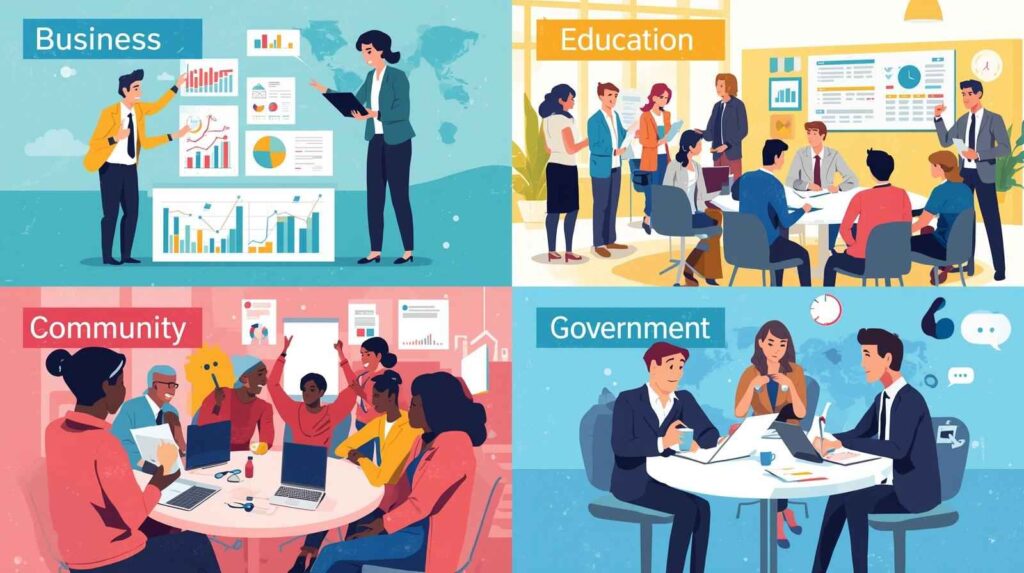
Challenges and Misconceptions
Like any methodology, the Technology of Participation isn’t without challenges. Many people misunderstand what it actually is, while others assume it works like magic in every situation. Let’s clear up a few of the biggest misconceptions.
Misconception 1: ToP is only for large organizations.
This isn’t true. While multinational corporations use ToP for strategic planning, small nonprofits and even local community clubs also benefit. The size of the group doesn’t matter, the structured process does.
Misconception 2: ToP is too rigid.
At first glance, the step-by-step nature of ToP might feel inflexible. In reality, it’s highly adaptable. Facilitators often adjust questions, timing, and exercises based on the group’s culture and needs.
Misconception 3: ToP equals endless meetings.
Another myth is that ToP means longer discussions. Actually, the opposite often happens. By giving structure, ToP prevents groups from going in circles and helps them reach decisions faster.
Challenge 1: Requires skilled facilitation.
Not everyone can pick up a ToP PDF and run a perfect session. Good facilitation requires practice, listening skills, and sensitivity to group dynamics.
Challenge 2: Resistance to participation.
In some organizations, people are used to top-down leadership. Introducing ToP can feel strange or uncomfortable. Overcoming that resistance takes time and trust.
Challenge 3: Cultural differences.
While ToP is designed to work across cultures, facilitators must be mindful of local communication styles. What feels participatory in one context may feel awkward in another.

Frequently Asked Questions (FAQs)
1. What exactly is a Technology of Participation PDF?
A Technology of Participation PDF is a digital guide that explains ToP methods in detail. It often includes step-by-step instructions, templates, and examples that facilitators can use during group sessions.
2. Who developed the Technology of Participation?
It was developed by the Institute of Cultural Affairs (ICA), an international nonprofit organization known for its work in community development and leadership training.
3. Is ToP only for professional facilitators?
Not at all. While professional facilitators use it regularly, managers, teachers, community leaders, and even volunteers can learn and apply ToP methods effectively.
4. Can ToP be used online or in virtual meetings?
Yes. Many facilitators now adapt ToP methods for Zoom, Teams, or other digital platforms. While some adjustments are needed, the structured nature of ToP actually helps keep virtual sessions focused.
5. How is ToP different from brainstorming?
Brainstorming often produces lots of ideas but little clarity. ToP, on the other hand, organizes ideas, helps participants reflect, and ensures the group reaches decisions.
6. Where can I find Technology of Participation PDF resources?
PDFs can be found on ICA websites, training programs, or through facilitator networks. Many organizations also create customized ToP guides for their own use.
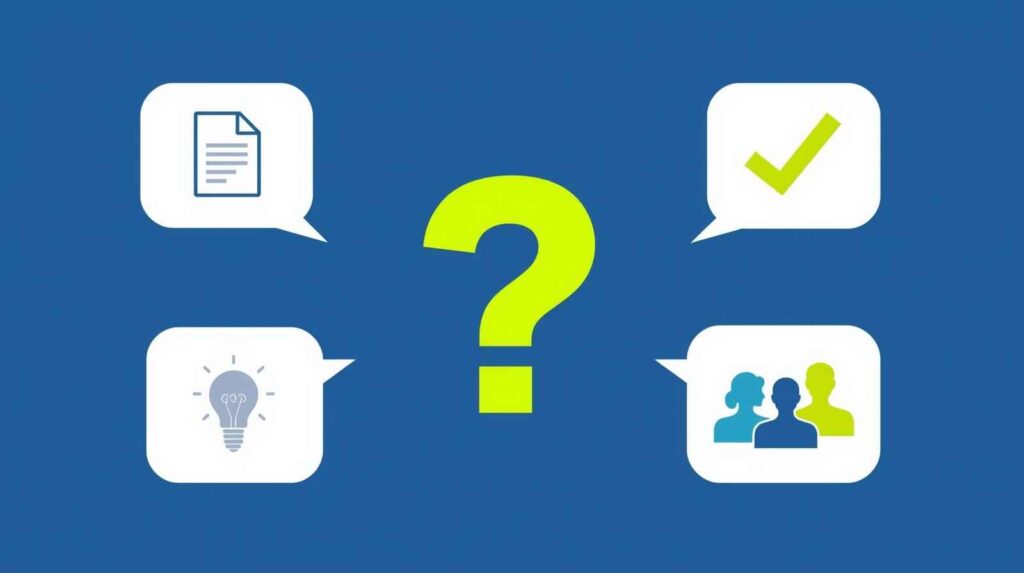
Conclusion and Final Thoughts
The Technology of Participation is far more than a catchy phrase, it’s a powerful way of ensuring that group conversations lead to meaningful outcomes. From its roots in community development to its use in corporate boardrooms, ToP has proven that structured participation is not just helpful, it’s transformative.
I’ve seen firsthand how ToP can turn chaotic meetings into productive workshops. People who normally stay quiet suddenly share valuable insights. Teams that struggle with alignment finally agree on shared priorities. That’s the magic of ToP, it doesn’t silence differences, but instead organizes them into a path forward.
The Technology of Participation PDFs serve as a practical entry point. They give you the tools and guidance you need to apply ToP methods immediately. Whether you’re facilitating a small workshop, running a strategic planning session, or leading a community meeting, those guides can save you from trial and error.
Looking ahead, ToP’s relevance is only growing. With workplaces becoming more global and diverse, the need for structured, inclusive decision-making is stronger than ever. The future will likely see ToP methods adapted further for online collaboration, hybrid meetings, and cross-cultural dialogue.
So, if you’ve been searching for a reliable way to make participation meaningful, the Technology of Participation is worth your time. Download a PDF, study the methods, and give them a try. You might just find that your meetings will never be the same again.
